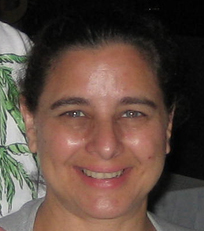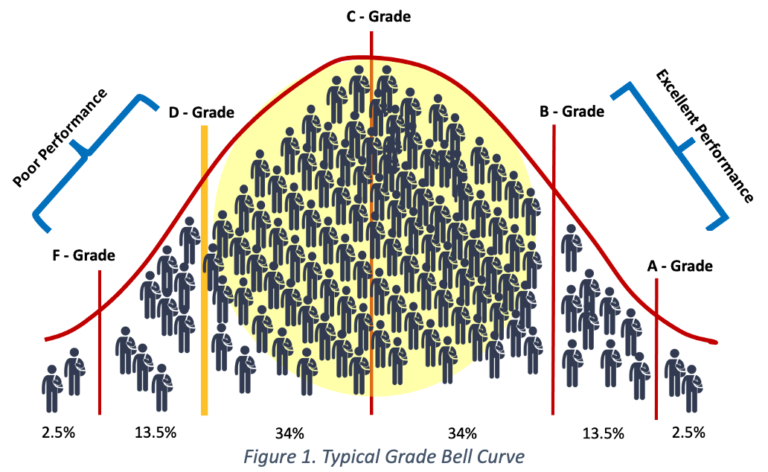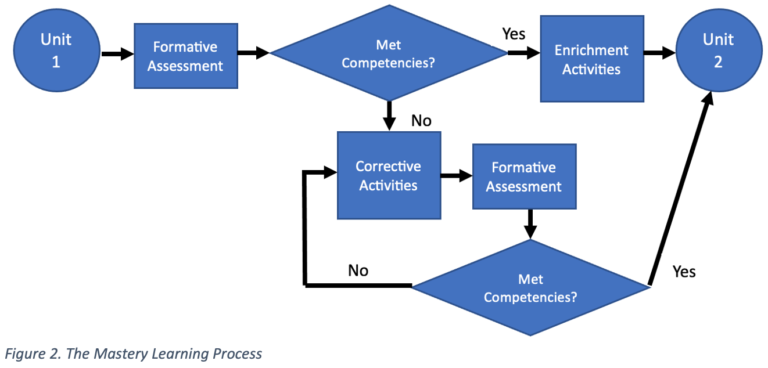Traditional Learning Environments
In traditional learning environments, the teacher sets the pace. All learners move on to the next lesson regardless of readiness. That means that the instruction time is the constant and the outcome is flexible: A-F. Traditional (Teacher-Centered) classroom flow is listed in the bullets below.
§ Participate in instructional activities supporting learning
§ Study for the corresponding test
§ Regardless of the grade, move on to the next chapter
§ Where we try to learn the next unit of material
§ Are tested on the new material
§ …repeat… until the class is completed
The traditional method does not lead to mastery. Additionally, the assessment of learning achievement may be as much about how quickly a student can learn as it is about what is learned. This is especially true with a class of diverse learners. Mastery or proficiency of the course content should be the overarching outcome. What is it that we want the learners to be able to do or demonstrate knowledge of by the end of the course?
In the traditional learning environment, where time is constant and learning is the variable, the normal distribution bell curve grading scheme is usually applied. Typically, 16% of learners excel while 16% perform poorly. 68% are average or earn a “c” grade. Most of the class, 84%, learning with the traditional model are not proficient.
As a side note, in Rogers’ Diffusion of Innovation Theory, the chasm or tipping point, is represented orange line in Figure 1 or the “D” grade, is past the first 16%. These are innovators and early adopters for Rogers. The same holds true for grades. Think about it, in most 100-point grading schemes, 0-59 is an F. Each 10-point increment after that is the next higher grade. Learners do not approach competency until at least 70% grade or after the first 16% on the bell curve. As with innovation, crossing the lower grade chasm can be difficult for learners.
In the 1960’s Benjamin S. Bloom conceived of the Mastery Learning model in which learners need to master the content before they can move on. The Mastery Learning pace is flexible and the outcomes more similar. The proficiency level is set by the teacher usually at 80% or 90%. Instead of a normal bell curve distribution, the bell skews to the right with most grades being B and above. If proficiency is set to 90%, the curve is more acute, skewing to grades A and above. We often see this model applied to graduate programs, where grades of C or below are typically rare.
The Mastery Learning Model
Bloom’s model supports learners through the learning process. Some learners may need more time and guidance than other learners. Mastery Learning puts the responsibility of learning on the learner to persist and on the instructional design (and faculty) to support extended learning efforts. Mastery Learning requires:
§ Clear learning goals
§ Detailed learning progress tracking
§ Diverse opportunities for learners falling behind to catch up
Figure 2 shows the Mastery Learning process flow. Learners continue to practice, review and be assessed until they are ready to move on.
The 5-Steps of Mastery Learning
1. Pre-assessment – learner is prepared to learn new material, if not go back and review prerequisite, foundational information
2. Instruction – after the learners demonstrate that they have the foundational skills or knowledge to proceed, the teacher begins instruction
3. Formative assessment – this may be in a variety of formats, polls, quizzes, exit tickets, homework, etc.
4. Correction or enrichment – personalized enrichment for learners who demonstrate high competency and additional personalized instruction and opportunities to practice for those who have not achieved mastery
5. Summative grading – learners take a summative assessment (paper, test, project, etc.) once most learners have achieved mastery; keep working with learners still needing to master the content; mastery is often set to 80%
Mastery Learning in HyFlex makes sense
In the Mastery Learning model, the focus is on learning and not grades. When learners focus on grades, they tend to rush to finish rather than fully engage in learning. For weaker learners, the focus on learning reduces the fear of failure aspect of education. Mastery Learning along with Universal Design for Learning (UDL), differentiated activities and assessments, and Standards-based Grading fit well with HyFlex course design. They help the instructors adapt materials for a learner-centric, personalized learning experiences. Mastery Learning, in addition to flexible pace, provides multiple opportunities for learners to master the content. With HyFlex, you not only meet learners where they are (Mastery Learning) but also with what they have (access and technology appropriate for the delivery mode). The addition of choice and equivalence further contribute to a learning environment designed for success.
Note for Canvas LMS users: Mastery Paths is a mechanism for creating choice. Canvas Learning Mastery is used to create the competency-based gradebook and used for Mastery Learning.
Resources:
https://otus.com/guides/mastery-learning/
Author
-

Recently retired from the LCTCS. Served as the Dean of Global Online at Fletcher TCC and Dean of DLIT at Delgado CC. Is a HyFlex Learning Community Advisor and a freelance ID.
View all posts

